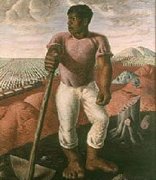What do you know about Japanese hand punching? Talk about the major genres of Japanese hand-made coffee.

For information, please follow the coffee workshop (Wechat official account cafe_style)
With regard to hand brewing, Europe and the United States are relatively bold and unrestrained, Japanese brewing is more popular in China at present, the general method is to pay attention to the forearm driven by the big arm, turn slowly, keep the wrist motionless, and control the size of the water flow all the time, but there are also follicles and drip filters. Japanese hand-made coffee has N methods and names.
Japanese hand flush, with the calm style of romantic old school, but also ripples the humility of continuous innovation.
Japanese coffee culture can be traced back to the Edo period, while hand-made coffee was written by different staff at the beginning of the Showa period, forming a magnificent amber magic tale that continues to this day.
Japanese hand workers are good at exploring the characteristics of each bean with aesthetic thinking, using their own excellent flow control ability and temperature control ability to remove the miscellaneous smell of beans, and find out and present the best taste of beans in the process of blending.
Therefore, just like creating unique taste works of art, there is no repetition of the taste of a cup of Japanese hand-made coffee, and each hand-made coffee worker has his own unique skills.
1. The volcanic flushing of the Japanese coffee hand brewing school
The origin of volcanic flushing is very interesting, when brewing, the coffee powder in the filter cup will bulge like a volcano, and will also have the same visual effect as a volcanic eruption, which is very wonderful. The principle of volcanic flushing is very simple, using relatively deep-baked soybean powder, constantly draw a circle in a small area in the center, resulting in a constant repetition of the process of steaming. Because fresh deep-baked beans can emit enough gas to show the state of a stuffy steamed bag, it looks as beautiful as a volcanic eruption and is pleasing to the eye.
However, the volcanic flushing has a weakness, because the first 1/3 segments are over-extracted, and the last 2/3 segments are under-extracted due to the control of increased water flow.
2. The loose grip of the Japanese coffee hand brewing genre
Matsuya method is also one of the famous Japanese hand-made coffee streams, which was originally invented to extract only the delicious ingredients from the coffee.
Use a spoon to dig a big hole in the coffee powder, about 30cm from the noodle, pour water from the middle until the coffee liquid begins to drip, then draw a circle like a circle to wet the coffee powder and cover it with steaming. After 3 minutes, uniform and uninterrupted water injection began. Stop filling when the coffee liquid reaches half of the coffee pot, and then add hot water to dilute it.
3. The drip method of Japanese coffee hand brewing genre
Drip method, like Volcano Chong, originated in Japan, is a very delicate and time-consuming Japanese hand-made coffee genre, which is a manifestation of the great importance the Japanese attach to form. People who see a little bit of coffee made by a dharma hand for the first time will be surprised by its similarity to the hourglass as well as the editor. Yes, when the water drips into the coffee powder, it looks like an hourglass, making the slow life of coffee and time so graceful.
At first, the Japanese concentrated a little bit of water to pre-soak the coffee powder and moisturize it. When the coffee powder was dripped with almost 1 tap 3, they could begin to inject water. When the water level of the coffee powder reached its peak, it could stop for a while, and when the water level dropped to half of it, it could be injected again. Although the drip method is very time-consuming, it looks very exquisite and has a sense of rhythm, and it gives the coffee maker time and space to make friends with the guests, which also reflects the Japanese concept of attaching importance to every minute and taking the momentary thing seriously. The beauty of drip method is that it can highlight the sweetness of coffee beans and avoid sour and bitter tastes. For those who pursue high-quality coffee and boutique life, drip-drip coffee is really a very good attempt.
The production process of Japanese hand flushing is also very pleasing to the eye. We can rarely witness the process of seeing artists create works, but we can personally experience the birth of hand-made art in front of our eyes.
Important Notice :
前街咖啡 FrontStreet Coffee has moved to new addredd:
FrontStreet Coffee Address: 315,Donghua East Road,GuangZhou
Tel:020 38364473
- Prev

News of Brazilian coffee; rediscovered the legacy of Brazilian coffee tycoons.
About archives this is a digital version of an article in the Times print archives before the start of online publication in 1996. In order to keep these articles from appearing in the first place, the Times will not change, edit or update them. Occasionally the digitization process introduces transcriptional errors or other problems. The architecture of Brazil is characterized by its Portuguese-influenced Baroque church, Oskanimai.
- Next

Where can I buy green coffee beans? What kind of coffee beans are the best?
We're glad you asked! Coffee Bean Corral offers a variety of green unroasted coffee beans from all over the world. Whether you like bold, rich flavors or sweeter, milder blends, you can find coffee beans that suit your taste on our website. We are the first green coffee bean store on the Internet, so we know how to provide you
Related
- Beginners will see the "Coffee pull flower" guide!
- What is the difference between ice blog purified milk and ordinary milk coffee?
- Why is the Philippines the largest producer of crops in Liberia?
- For coffee extraction, should the fine powder be retained?
- How does extracted espresso fill pressed powder? How much strength does it take to press the powder?
- How to make jasmine cold extract coffee? Is the jasmine + latte good?
- Will this little toy really make the coffee taste better? How does Lily Drip affect coffee extraction?
- Will the action of slapping the filter cup also affect coffee extraction?
- What's the difference between powder-to-water ratio and powder-to-liquid ratio?
- What is the Ethiopian local species? What does it have to do with Heirloom native species?

